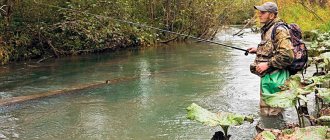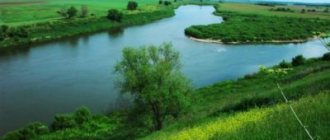A few words about the city of Syzran
Syzran is one of the oldest cities in the Russian Federation. It was founded by Peter the Great back in 1683. Today it is the most favorite place among fishermen for several reasons:
- The city is located on the banks of the Krymza River, which flows into the Volga. The water channel is very clean, the current is moderate. This ensures fruitful fishing.
- In the nearby area there are a huge number of bays in which you can catch small fish at any time of the year.
- The main advantage of the area is the deep lakes.
- The climate is moderate, with hot summers and cold winters, which has a positive effect on the fishing process.
- In the territories adjacent to Syzran there are several modern recreation centers where you can rent the necessary equipment for your favorite activity.
Fishing in Syzran on the Volga and other water sources is the most exciting pastime for lovers of natural beauty.
Fishing in the Samara region.
There are a lot of methods for catching pike. For fishing they use float rods, spinning rods, girders and much more. It’s good to catch pike using bait, worms, small fish, bird entrails, or, as they say, live bait. On a spinning rod, good baits are various spinners, spinners, wobblers and any kind of spoons. Let's focus on the wobbler, and most importantly, on the fishing technique. A wobbler is a fish bait made of wood or plastic; its configuration can be similar to a fish or an insect. From 1 to 3 treble hooks are inserted into the bait. The tail hook is sometimes wrapped with colored threads, feathers and colored wool. This is called a fly. Pike is a predatory fish; it is not designed for prolonged pursuit of prey. She grabs her prey in a lightning-fast throw. Because of this, the fishing technique should cause the pike to make this throw. What needs to be done for this?
Wobblers for pike that move quickly in the water, or, on the contrary, move slowly, do not provoke the pike. Pike reacts faster to changes in the speed of the retrieve, due to the fact that it resembles the natural prey of pike. This can be done in the following ways. With a spinning rod, at first it is a light slow retrieve, followed by a few quick turns of the Shimano reel and the bait begins to move faster, this forces the pike to make a quick throw. This must be done several times if you are convinced that a pike is somewhere nearby. If you are fishing for pike from a boat, the bait will usually float slowly through the water and the pike will not be interested in it. In order to intensify the movement of the bait, you will have to change the speed of the boat. Using one paddle you make the bait move to one side, the other to the other, a few more quick strokes with both paddles and your bait comes to life. Accelerations can be done vertical (up then down) and horizontal.
Most of the bites happen just at the moment when the bait begins to move faster, at this moment it looks like a running fish. As soon as you feel that the line is stretched, be sure to make a quick hook; a large pike may escape due to the fact that the hooks do not penetrate well. Then you can safely fish it out. The pike does not rush, but slowly swims away with the prey. This fishing technique can be used with any bait; it is called a spurt liner. I hope you catch your first pike using this method.
Happy fishing!
Catfish and its habitats.
Of all our freshwater fish, the first place in size undoubtedly belongs to the catfish. In this respect, only one beluga surpasses it, but it is known to be an anadromous fish that enters rivers only for spawning.
The appearance of the catfish is extremely original and ugly. In terms of the general shape of the body, it bears some resemblance to the burbot, but its head is much wider and flatter and forms a significant part of the entire naked body, covered with a thick layer of mucus. Its mouth is huge and armed at the edges with numerous, very small, but rather sharp teeth, shaped like a short brush; on the upper jaw there are two long whitish whiskers, and on the lower, somewhat protruding, there are 4 yellowish whiskers, three times shorter than the first; the eyes are disproportionately small with height and are very close to the upper lip. The tail, strongly flattened laterally, especially towards the rear end, occupies more than half of the entire body; the anal fin is very long. The color of the catfish changes depending on the water, also according to age and season, but most often its back is black, its belly is yellowish-white or somewhat reddish and is almost always speckled with bluish specks; the sides of the body are blackish-green and covered with olive-green spots; the eyes are pale yellow and with black spots, the fins are dark blue, pectoral and abdominal with a yellowish stripe in the middle. Young catfish have a sharper and brighter color of skin and fins. Lake catfish are always darker than river catfish, and their belly is gray-bluish in color. The appearance of an old, large catfish is disgusting: the head turns from whitish to dirty yellow, and many water worms, like leeches, stick to it, covering both the body and the head.
The catfish is the only European representative of the catfish family, the species of which are quite numerous in South Asia and tropical Africa. However, it is not found throughout Europe: it is not found in France, Spain and Italy, and p. The Rhine forms the western border of the distribution of this predator. In Western Siberia, as far as is known, catfish have not been found, but in Eastern Siberia, in the river. Ingoda, Shilka, Onone, etc., another species appears, distinguished by the dark color of the whole body, 4 antennae and small size. In all likelihood, the eastern border of its distribution should be sought in Central Asia, where it was found in the Syr Darya, Amu Darya, Zeravshan, etc.; here, however, there is a difference, distinguished almost exclusively by the smaller number of rays in the anal fin.
The common catfish lives in our country mainly in the rivers of the Aral-Caspian and Black Sea basins, and is most numerous in their lower reaches, especially the Volga and Kura; in the rivers flowing into the Baltic Sea, it is relatively small in number and does not reach such large sizes as in the south of Russia. The reason for this is more intense persecution, a comparative lack of fish, that is, a lack of food during a longer winter fast. It is very likely that catfish, like carp, spread to Central Europe already in historical times. In general, the geographical distribution of these fish in Russia is almost the same and continues to expand more and more, although in this respect the catfish is somewhat ahead of the carp. In Lake Onega, for example, catfish appeared no more than 25 years ago. In Finland it was found as far as Tavastgust. There are no catfish in our northern rivers at all, and it is unlikely that they are even found in the northern tributaries of the Kama. At the mouths of our southern rivers, especially the Volga, Kura, Don and Dnieper, catfish are among the most common fish; in the sea itself, however, they stick to river water. Catfish are sometimes found in large numbers in deep flowing or flood lakes connected to a river.
Under favorable conditions, catfish achieve enormous growth. In the rivers of the Baltic basin, as well as in the tributaries of the Upper Volga, they rarely exceed 5 poods; however, on the Oder, famous for the abundance of catfish, back in 1830 a specimen was caught that weighed 400 kg, i.e. almost 25 pounds.
In the Desna, a tributary of the Dnieper, 10-pound specimens are still found. But in general, Lower Volga catfish are relatively small, and in small rivers of the Volga basin, catfish are larger and more numerous than in the Volga itself, excluding its lower reaches. Lake catfish are always relatively smaller than neighboring river catfish.
Catfish are one of the most sedentary fish and very rarely undertake long journeys. For the most part, he lives for decades, from youth to old age, almost all year round in the same hole, emerging from it to look for food nearby, and even then not always. Only in the spring, when the water is low, does the catfish temporarily leave its native hole and rise somewhat up the river, often entering the floodplain and floodplain lakes, where it often spawns.
On the Lower Volga (probably in the lower reaches of other Russian rivers), the spring migration of catfish begins with the beginning of the flood, in this case around mid-April. Sensing warm water, they awaken from their winter sleep and emerge from the pits into backwaters, lakes, sometimes into the sea, but more often, however, rising upward. The catfish cannot tolerate very muddy water and, like pike perch, sometimes even dies from it, and therefore each more significant flood forces it to leave its hole and look for cleaner water at the mouths of small tributaries. For the same reason, during low water it is rarely found in the riverbed and remains on the floodplain and in floodplain lakes until the recession. Like all other fish, catfish go further upstream the larger and longer the river flood. In general, the smaller the river and the shorter the duration of its flood, the more sedentary this fish leads and the more often it spawns in the riverbed itself, and not on the floodplain. In the secondary rivers of Central Russia, catfish cannot spawn on the floodplain, since they enter the banks by the beginning of May, long before the start of spawning. Most often, catfish spawn in floods in the lower reaches of the Volga, where the main flow of water begins in late spring.
A lot of time passes between the catfish awakening and the beginning of spawning, at least a month. During this period of wandering life, catfish feed heavily on fish, especially spawning fish, and thus reward themselves for long-term fasting. At first, he also feeds on worms, to which in the summer he pays almost no attention, even not particularly large ones. In general, catfish food is quite varied, although exclusively animal. The main food is, of course, fish of all types and different sizes, from the smallest to the largest. But, as, however, it is not difficult to see from its build, the catfish is not capable of prolonged pursuit and almost always catches fish from ambush, quickly bursting into a passing school or, with the speed of lightning, grabbing a single fish swimming nearby. There is no doubt that the catfish owes this swiftness to its powerful and flexible splash, i.e., the back half of the body with the tail, and that with the same splash it sometimes stuns several fish in a school. Chasing live bait, the catfish sometimes jumps out of the water, clumsily, like a sack, falling back, scattering water in a heap and deflecting its tail somewhat to one side. Large catfish, over two pounds, are very clumsy and clumsy, and therefore they rarely catch fish, especially large ones. However, it is known that such giants resort to a rather original trick for catching small fish, namely: they go aground or stand under the shore in a place where there are a lot of fingerlings, also spruces, bleaks scurrying around, and lie here motionless, half-opening their huge mouth. As soon as a school of small fish approaches the predator, unaware of the danger threatening it, the catfish draws in water, and dozens of fish, carried away by a suddenly formed strong whirlpool, disappear into the mouth. In addition, the catfish, hiding behind a stone or snag, undoubtedly uses its mustache as bait: the fish, seduced by these tender, fleshy, worm-like appendages and without seeing the catfish itself, comes close, and the predator, seizing a free moment, quickly grabs it carelessly approaching fish.
Since this method of obtaining is not particularly reliable, fattened catfish feed mostly on frogs, crayfish and shells, that is, large river ones, and in the sea and estuaries, probably many others. Frogs, mostly green, are a delicacy for catfish; lying at the bottom, he always listens carefully to see if a frog is croaking somewhere, immediately swims up to the singer and quickly, opening his huge mouth in advance, rushes at her. This weakness for frogs encourages catfish not only to visit grassy river pools, but often get stuck in flood lakes; The most productive and interesting fishing, the so-called, is based on it. ragged.
Catfish, especially large ones, do not allow anything living floating on the surface to escape and destroy a large number of ducklings; goslings, as well as adult water birds. They often drown swimming dogs, even calves, and there are several examples of large catfish dragging swimming children into the water and drowning them. Catfish also eat any carrion that falls into the river, and out of hunger they even rush to rotten rags and even snatch linen from the hands of women rinsing it. Near fishing gangs (fisheries) in the lower reaches of the southern Russian rivers, especially on the Kura and Volga, catfish feed almost exclusively on the leftovers from cooking fish and at certain times, when these leftovers are thrown out, they gather near the rafts in such numbers and grab food with such greed that which is a terrible sight.
Spawning of catfish begins relatively very late, when the water reaches a temperature of at least 15 or even 16, generally almost simultaneously with carp, mostly in May. It is doubtful that anywhere in Southern Russia, except Transcaucasia, catfish rubbed in early April. On Klyazma, in Vladimir province, the catfish begins to rub during the flowering of the rose hips - in early June. Only Lower Dnieper catfish can spawn in early May, maybe even at the end of April. According to Yakovlev, near Astrakhan, catfish spawning, or rather, preparation for spawning, begins during the flood - in May, and according to Popov, on the Don, catfish rub from the end of May to the beginning of July. This long period probably depends on the fact that this implies the beginning of spawning and the final hatching of juveniles and the departure of old catfish from the spawning ground.
In all likelihood, catfish become capable of reproduction in the fourth or even third year, since already five-pound specimens contain caviar and milt. Males, as always, are noticeably shorter and thinner than females of the same age, but no big difference is noticeable between spawning individuals, since the male may be in danger of being swallowed by the female. Those schools of catfish that are often spotted in the spring, even before spawning, also consist of individuals of the same age and approximately the same size.
The spawning ground, or tyrlo, of catfish occurs in quite different places, depending on the conditions of the area, but, apparently, it is very rarely seen in the hole that serves as their permanent abode. The only exceptions are, perhaps, small rivers, where catfish, of necessity, lead a completely sedentary life. In Southwestern Russia, catfish spawn mostly in deep but quiet gullies and channels filled with sunken snags; on the Don, catfish rub near reeds, kugi or other grass, in small places; in the Lower Volga - always in flood, in flooded meadows, mainly where old hay and last year's reeds float. In flood lakes, catfish spawning is not seen as often as in channels, but even here they are sometimes seen before spawning in large numbers, in whole flocks. But although these catfish gatherings in areas abounding in catfish are accompanied by an extraordinary splash and rolling blows, which can only be compared with the noise made by a herd driven into the water, although the catfish chase each other and even wrap themselves around like snakes, this is not yet a real snout , but only, so to speak, a prelude to spawning. Catfish gather in schools and carry out the described evolutions for two purposes: firstly, they break eggs, and secondly, here the choice of spouses occurs for the catfish. Somovye Tyrlo is in some way a current market, in which, however, the female half prevails. Where there are few catfish, 3-4 males usually swim after the female, of which the catfish chooses one, probably the strongest; then, with their joint efforts, the couple drives away the ordinary gentlemen. There is a widespread belief among many industrialists in Central and partly Southern Russia that the catfish clucks, calling males with this clucking. Some even believe that the so-called clucking of catfish is based on imitation of the clucking of a catfish, and not the croaking of a frog. It may be that male catfish sometimes actually go to the spawn, hoping to meet a female, since there seems to be no doubt about the catfish’s ability to produce sounds, but since the spawning is almost always done in the summer, after the end of spawning, then, obviously, the catfish is not attracted a catfish, and a frog.
Having chosen a male, the catfish retires with him to a secluded place in a flood or in a channel, as mentioned above, and uses her chest feathers (cams) to dig out a hole. Here, in this oil, the catfish lays its eggs, which are quite large and relatively few in number. These eggs have a diameter of 3 millimeters; As for their number, there is disagreement regarding this opinion: according to ancient authors, the catfish has only up to 20,000 eggs, which is completely incredible for large specimens; O. Rguepp counted 60,000 eggs in a five-pound catfish, and Borne believes that their number reaches 100,000. If the calculation is correct, then, of course, large catfish should have more than one hundred thousand eggs. During spawning, catfish often swim on the surface, turning belly up. On a hot day, they lie in the sun in this position for quite a long time, steaming the carcass, in the jargon of the fishing industry. In all likelihood, spawning occurs not in one, but in several stages, but, like almost all other fish, it still has a lot of dark and unexplored things.
A catfish couple lives in great friendship, and having met one, you can be sure to find another nearby. This is not enough: the female and the male do not leave the mazla until all the young hatch, and they protect the eggs from the attack of the little things they like, driving them away from the mazla with blows of splashing. From these blows, fishermen learn about the proximity of the spawning ground and, having approached it, often kill (with a sandovie) one or both catfish, since they, especially during spawning, are extremely quiet, they allow a person to get very close, and if one is killed, then the other will soon return to its original place.
Young catfish hatch from the egg after 7-10 days and at first remain in the hole, feeding on silt and plant matter, but soon disperse, and in the Lower Volga a huge number of catfish remaining in small Kaluzhins and swamps dry out or become prey for birds. Nevertheless, it is difficult to explain why catfish, under particularly favorable conditions for the preservation of eggs, are relatively less common than other fish. It is very possible that most of the hatched fry are eaten by catfish, even by their parents. The latter, however, having fulfilled their duties, return to their usual places, in the pits, and in the lower reaches of the Volga they slide into the river. The end of spawning here always coincides with a decrease in water.
Young catfish, especially the first 5-6 years; grow extremely quickly. A month later they are already a quarter in length; even in the Moscow River in July you can come across 5-inch-long fingerling catfish, which hatched here probably at the end of May. In the fall, in September, catfish reach a weight of one, even one and a half pounds. Based on some fragmentary observations, I believe that in the first five years the growth of catfish occurs almost in geometric progression, that is, every year the catfish doubles in weight; a three-year-old catfish at the end of May weighs, with a height of almost 6 arshins, a four-year-old - 12, a five-year-old -20 - 24. A pound catfish, which is about 2 arshins in length, is at least 6, but hardly more than 8 years old. Seasoned catfish increase in weight more and more slowly. Based on the fact that the catfish, transplanted from the Oka to the Bishop's Pond near the city of Kolomna, reached almost 5 pounds of weight at the age of 35, and also taking into account that pond and lake catfish grow more slowly than river catfish, even with more abundant food, I I believe that a 2-pound catfish is at least 12 years old, a 4-pound catfish is at least 24, an 8-pound catfish is at least 50 years old, and that the largest catfish, weighing 15-20 pounds, are at least a century old. It may very well be that with more careful observation it will subsequently be possible to completely accurately determine the age of the catfish, especially since it, without eating at all for 5-6 months, grows quite like a tree.
After hatching the fry, the catfish, as mentioned above, return to the pits, which serve as their permanent residence, and, probably, the pairs are separated. Where there are few catfish, they live constantly in the deepest holes, and the deeper and more inaccessible it is, the more numerous and larger the catfish living in it. Catfish up to 20-30 pounds do not particularly adhere to deep places, and they can be found in places at 2 - 3 arshins. For catfish, it is not so much the depth that is important as the inaccessibility of the place and the shade, and therefore they can very often be found, especially in the south, under the so-called. floating, i.e. floating banks, under overhanging bushes, coastal canopies, roots of willows and willows, under dams, etc. In rocky rivers, for example. Dniester and Buga, catfish are often found between stones and in large crevices in a community with burbot, which they persistently pursue.
Brief description of water sources
Local residents rarely think about where they will go fishing this coming weekend. The quarry in the Mongory area has long been my favorite place. This territory can be called amazing. Even when the weather is windy outside, there is complete calm and tranquility in the water. Unfortunately, large fish are extremely rare in this source, but there are more than enough small fish.

If you want to set a record and surprise your rivals with a big catch, then it is recommended to go to the vastness of the Volga, Syzranka, Usa or Krymza rivers. You will need to take a boat and nets with you so that you can fish from the depths. Usually this is where she hides during the hot period.
Another popular place is the lake near Novaya Racheika. The reservoir attracts with its cleanliness. Even in his very heart you can see a hard bottom. There is a lot of fish here, so you can always count on a good catch.
Saratov Reservoir
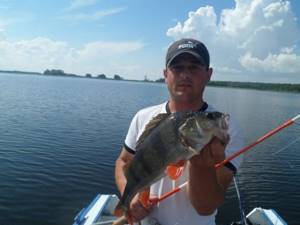
Most local and visiting fishermen seek happiness in the Saratov Reservoir. In such a reservoir, the ichthyfauna is represented by almost all species of fish in the Volga River basin. There are great opportunities for fishing lovers here. Admirers of any method of fishing have the opportunity to realize their desires in one of the places in the reservoir. For fishing, fans of float gear select an area with a calm flow in the channels. Those who like feeder fishing can also join them.
On the Volga River itself, which reaches a considerable width in the Syzran region, you can quite effectively catch excellent bream using feeder gear or side fishing rods. But spinning anglers can confidently take with them existing fishing rods, ranging from ultralight to heavy ones. Spinning fishing is available in different options: trolling or casting in places with the required depth. You may also need all kinds of baits, from light spinners and wobblers to heavy jig heads, which are needed for catching at a depth of up to 15 meters.
What species are there?
The main question regarding fishing in Syzran is what can you catch in the reservoirs? Most often, crucian carp is caught on the bait. Not a single fisherman will be left without such a catch. The bite is especially good in the morning hours, from approximately 6:00 to 8:30.
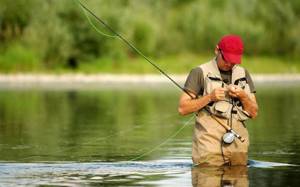
In the afternoon there is a chance to catch bream. The average weight of one copy is from 1.5 kilograms. At any time of the year you can find dace, bleak and perch.
The most popular bait is small insects - flies, mosquitoes, worms. The fish readily bites on semolina and bread.
The most popular recreation centers
For fishing in Syzran to be enjoyable, you need to arrange a real vacation for yourself. What is needed for this? Of course, choose the right place where you can spend the night, relax and have a snack. In total, there are three most popular recreation centers in the vicinity of Syzran.

- Located on the banks of the beautiful Usa River. It is in this place that you can rent the most necessary equipment for your favorite activity. While parents are fishing, their children can play on the playground or visit the games room. The base has a modern sauna, billiards and a cozy restaurant.
- You can combine business with pleasure by going to the Olympus recreation center. You can spend the night in wooden houses equipped with everything necessary for a complete stay. In the evening you can relax in a local bar.
- At the Medic recreation center there is the opportunity to go fishing. Wooden houses, a swimming pool, a playground - everything here is aimed at quality recreation.
About the forecast
What should you know about fishing in Syzran? Bite forecast. Experienced fishermen know what it is. Professional weather forecasters determine the weather for the day, taking into account such indicators as air temperature, water temperature, ice thickness, precipitation, air humidity and other data. The information obtained helps to find out for which river species this regime is most favorable, and what a fisherman can hope for, counting on an excellent catch.
There are seasonal bite forecasts that contain information about what time of year what kind of fish is found in the water source. Fishermen are also interested in general statistics that accumulate information about when a good catch will be observed, and at what time of the year there is nothing to hope for. Such a picture can be drawn by a lover of quiet hunting himself, based on his own experience.
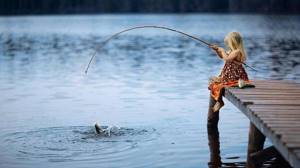
Experienced specialists can create a bite forecast for 3 days. In Syzran, fishing becomes most popular in mid-August, when the heat subsides, the flow normalizes and coolness sets in. It has been noticed that from approximately August 15 to September 1 the most effective bite.
A sport fishing competition for perch was held in Syzran. “Syzran perch. Gold autumn"
Last Saturday, in the oil loading area, a sports fishing competition “Syzran Perch” took place. Golden Autumn" which united fishermen from Syzran and Tolyatti.
The first stage began at 9-30 am. Thirty-six spinners, divided into two teams by sector, relying on their experience and professionalism, at the judge’s signal, made the first casts of bait into the water.
In addition to amateur fishermen, Syzran athletes of the all-Russian level took part in the competition: multiple winner of the Russian championships, the most prestigious commercial tournament PAL (Pro Anglers League) - Sergey Karpov and participant of the Russian championships, as well as regional competitions - Artur Atayants , who took prizes for catching the largest fish
In a conversation with media representatives Sergei Karpov noted that such events are interesting, since fishing is carried out from the shore (approx. Karpov is a professional athlete in fishing from a boat) and neither a boat nor any special equipment is required to participate in them.
This is a truly accessible competition for anyone, which is very important for the promotion of this sport, which is carried out by the organizers - members of the Syzran fishing community.
After two hours of competition, the leader of the first stage was determined based on the results of weighing; he became Artur Atayants with a total weight of 631 grams of fish caught. The first round also ended with a bright result for Andrey Nadrshin , who caught the largest perch weighing 364 grams.
After the intermediate weigh-in, which ended at noon, the athletes had a snack and exchanged impressions of the first stage of the competition, many telling their colleagues about the advantages of the chosen strategy and bait that they would use in the next two hours.
By the beginning of the second stage, the sun appeared in the sky and it became warmer. The participants switched sectors and continued the “heated” fight for prizes.
The atmosphere of the competition was tense, with cold-blooded glances and methodical casts of the spinners, turning into delight and joy on the faces when the empty catch containers began to gradually fill with fish again.
The neighbors looked at each other and sometimes made good jokes. Many fishermen know each other. They fish together not only in competitions.
As a result, after two stages, which lasted two hours each, the organizers held another weigh-in and summed up the results of each participant. First place with a total weight of 1366 grams of caught fish was taken by Artem Prikhodko , second by Artur Atayants (939 grams), third by Evgeniy Zinoviev (814 grams), and fourth by Artem Olefir (781 grams). The winners were awarded valuable prizes from the sponsors of the competition: various sets of silicone baits, wobblers and two spinning rods.
The participants, overwhelmed with emotions, took group photographs as a souvenir, and the organizers used two basins of caught fish in the “Feed Homeless Animals” campaign.
It is worth noting that this is the second time that participants from the city of Togliatti are coming to the perch fishing competition in Syzran.
One can even assume that in the future, thanks to the interest shown in the event by professional athletes and Togliatti residents, as well as the fruitful work of the organizers, the city competition will smoothly move to the regional level.
Peculiarities
Before you go fishing, you should study the peculiarities of its implementation in each locality. The Samara region is home to the most selective fish. In order to catch it, you will need to be patient. It is not recommended to come to the shore with one type of bait; you should experiment as much as possible. This also applies to equipment: there is a greater chance of catching an individual from a boat than from the river bank. It is imperative to take into account the period of the fishing ban in Syzran. For example, in 2017 it will start on August 25th. If you neglect this rule, you may encounter representatives of the Rybnadzor and receive serious financial punishment from them.

Fishing in Syzran is exactly the type of vacation that every self-respecting man dreams of. On the banks of a beautiful river you can forget about everything: financial problems, everyday troubles, family quarrels. Fresh air and amazing nature will energize you for the coming week. To make the fishing process not only enjoyable, but also effective, it is recommended to first study all the places, familiarize yourself with the biting forecast and the peculiarities of the fishing process in this wonderful area.





